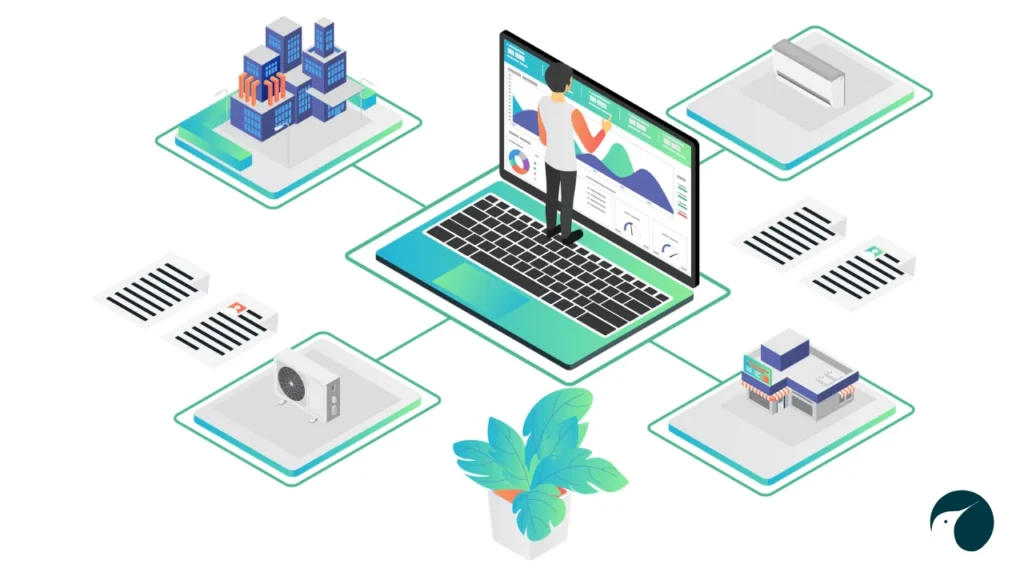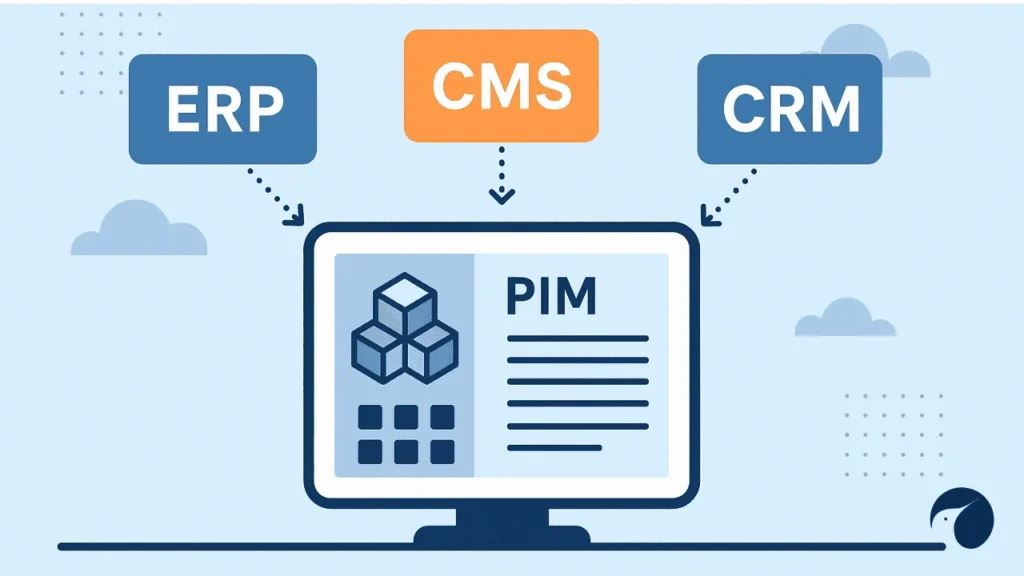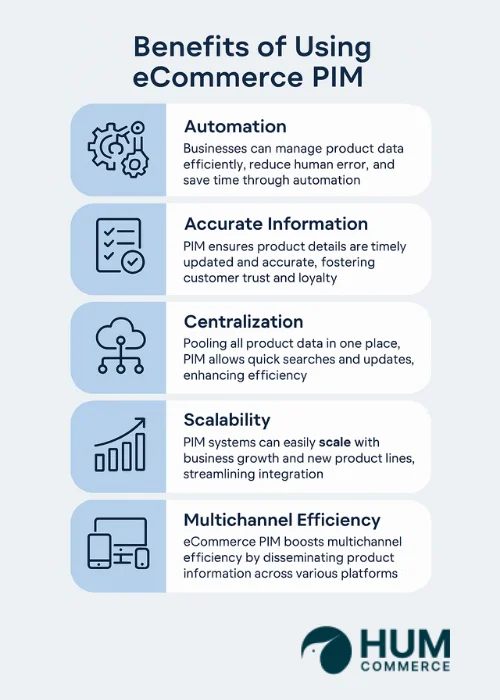The eCommerce sphere is continuously evolving, and so are the tools and strategies required for progress. In any eCommerce company, a product information management (PIM) system is one of the key instruments.
Channeling their focus, eCommerce PIM has become invaluable for a business while managing its online product data. PIMs allow companies to expand their offering and address their clients’ needs and requirements more effectively.
This article serves as a how-to and PIM-based resource for eCommerce businesses. We will also outline the functions you ought to seek when buying a PIM system for your company’s eCommerce.
To that end, we will help you gain the necessary knowledge to make optimal judgments for your online business.
What is a PIM?
An eCommerce PIM system is a software employed to organize & disseminate product information across multiple platforms.
The primary objective is to assist firms in streamlining and centralizing relevant product information. Such information entails product specifications, imagery, and prices.

PIM collects this information from a wide array of sources and merges it into a single system. This implies that they assist businesses in establishing and updating product information in a standardized way.
Furthermore, it helps businesses ensure that this information is easily accessible to their clients through different platforms.
PIM systems have also helped organizations to control information regarding their products with ease. Such systems have empowered them to update the information regarding a product, together with marketing content, quickly.
Such a system is ideal for any entity aiming to improve product sales and advertisement effectiveness through a PIM in an ecommerce setup.
Key Components of Product Information Management
Multiple pillars strengthen a PIM system for eCommerce, facilitating business operations and increasing efficiency.
1. Central Data Control
A PIM is the single source for all product information, including descriptions, images, and configuration details. The system consolidates all of these without using external databases, leading to increased uniformity across all channels.
2. Data Enrichment
PIM enables Product data, including detailed descriptions, good images, and optimized metadata, to enrich the data provided to customers. This enrichment strengthens customer interaction and decision-making.
3. Integration Capabilities
Interconnectivity with other software, such as ERPs, CMS, and CRMs, ensures that data flows from one system to another without disconnections.

This streamlines processes and minimizes duplication.
4. Distribution on Multiple Channels
Data generated by a PIM system eCommerce can be utilized to sell products on eCommerce websites, marketplaces, and print catalogs.
This ensures that customers are able to access crucial information about a product, no matter where they are looking to purchase it from.
5. Translation and Customization
PIM systems help companies with cross-border operations by offering the translation of product details as well as changing the currency of the offering.
eCommerce PIM Features
The adoption of PIM in ecommerce has gained popularity for its ability to bring products to market faster and more efficiently. An eCommerce PIM allows for efficient management of product information across multiple channels where it sells.
This means that PIM systems are able to gather and exchange information with many other systems. Such integration ensures that all information is always accurate.
In this manner, PIM systems allow users to draw on information from a variety of sources, including suppliers, databases, and ERP systems, without having to export it manually. This is both more efficient and less error-prone.
Multifaceted Deployment Options
Options to deploy and install the systems include in-house, in the cloud, and as SaaS. Each of these factors offers potential for tailoring a Pim system to suit the needs of the organization in a more focused and personal manner.
If high levels of security for sensitive data are an issue, then PIM systems allow for on-premise deployments. For quick deployments with low spending on set-up costs, a firmer option is available in the form of other deployment options.
Bulk Editing Features
PIM eCommerce systems enable users to bulk edit multiple products with ease. This involves creating, tweaking, or muting product details.
In regard to editing information, multiple products can be edited at once, and explanations can be provided for missing information, such as pictures and prices.
Automated Tasks
PIM eCommerce platforms can be connected to different pieces of software. These include workflows that cut down time consumption.
Some scenarios include a case use where automated tasks handle the process of answering appeals for new product data. They can also make sure new product information reaches the correct websites. Things like this make people working in offices waste less time on easy tasks without losing track of the ongoing tasks.
Support Cross-Border Commerce
This is a useful feature for merchants who deal in cross-border sales of products. Entrepreneurs can handle product specifications, currency variants, prices, and descriptions in all languages. On top of it, this feature aids businesses that wish to market their products in foreign nations.
Benefits of Using eCommerce PIM
The following are some of the benefits of PIM in ecommerce and why businesses are adopting it.

Automation
Automation forms the basis of a thriving eCommerce PIM system. Through automation, businesses are able to manage and support the massive amounts of product data that they need to have easily.
Automation enables businesses to concentrate on other vital activities, including the design of new products and growing the business’s clientele, while the PIM system undertakes all the tasks related to the product data.
This goes a long way in reducing human error and also saves time, as changes in product information can be quickly made by the PIM system.
Accurate Information
Correct and accurate information is the key to effective operations for any business, and with a product information management system, all product details required are timely updated.
As a result of the automation of the process, businesses are able to manage the product information updates so that the information is always up to date and also the most accurate for the customers.
This way, customers are able to create and build trust in the business, which also helps them be loyal to the business for a long time.
Centralization
Centralization is yet another important aspect of an eCommerce PIM system. As all of the product data has been pooled in one place, business owners can perform any searches for any information with speed and swiftness.
This works well in reducing the time that it takes to look for and change the product information, which in turn improves the efficiency of the business and the level of customer satisfaction.
Scalability
eCommerce PIM systems are built for scalability. For many businesses looking to grow or add new product lines, scalability is a key consideration.
A PIM system enables businesses to effectively address their ever-increasing product information needs. As a result, organizations can swiftly and effortlessly incorporate fresh products into their offerings without the need to alter the product information manually.
Multichannel Efficiency
A major advantage of employing an eCommerce PIM solution is greater multichannel efficiency.
Businesses may use eCommerce PIM to quickly and easily disseminate it across various channels, including their own websites, social media platforms, and print ads.
This enables businesses to serve more customers and expand their customer base, which helps in their omnichannel strategies and also boosts their sales and revenue growth.
eCommerce PIM Best Practices
These are the best practices for using the PIM in an ecommerce business that one should follow.
1. Begin with Good and Clean Data
Indeed, the accuracy of such data is of utmost importance. Therefore, make an audit of the existing data and clean and prepare it for use prior to integrating a PIM system.
2. Specify a Taxonomy Structure
Create an appropriate taxonomy of products and a hierarchy to go with it. This planning simplifies traceability and information retrievability.
3. Make Use of Automation Tools
Employ automation for data updates, data dissemination, and other such monotonous tasks, cut down the chances of human error, and hasten processes.
4. Undertake User Education/Training
Users must be trained properly so that they can make the most out of a PIM system. That will guarantee the right use of the system.
5. Analyze the Performance and Enhance the Outcome
Utilize the reporting functions of the PIM systems and constantly review the data being captured by the system. And make changes to rectify identified issues.
PIM eCommerce Mistakes to Avoid
The following are some of the common mistakes one should avoid when implementing PIM in an ecommerce platform.
1. Stakeholder Involvement Should Not Be Skipped
Stakeholder involvement during the selection and implementation of a PIM system makes it possible for the system to meet the organizational requirements and objectives.
2. Data Quality Should Not Be Ignored
Data is the core of any PIM system; if data is not taken care of, then it will deteriorate customer satisfaction.
3. Assumptions About Integration Needs Should Not Be Underestimated
Not taking into consideration the adaptation of the PIM system to existing tools can cause inefficient operations and excess expenses.
4. Scalability Should Not Be Overlooked
The PIM selected should be one that can develop alongside the business; a PIM that has low vertical scalability will impede future growth.
5. User Adoption Should Not Be Neglected
Even the best PIM system can underperform if there is no training or buy-in of the team into the system.
Who Needs PIM?
Business organizations like retailers, distributors, manufacturers, and wholesalers with expanded and multi-dimensional catalogs often use a Product Information Management (PIM), which acts like a software system.
Such organizations need to keep the product data within a central domain, and such software systems allow users to do that and more.
It facilitates seamless access to, edits on, and management of information related to products, including images, useful videos, and related information.
Furthermore, these PIM system eCommerce grants businesses the capability to easily synchronize their product data over several channels, consisting of web pages, mobile applications, print media, and more.
Conclusion
In today’s age, where the online economy is thriving, eCommerce PIM is an all-in-one solution for any firm trying to expand its responsiveness towards its customers.
Among the top benefits of PIM is streamlined control over the dissemination of product information across all platforms. It makes it easier for businesses to ensure good customer reach and supply them with an enhanced shopping experience.
eCommerce PIM is our specialty at HumCommerce, and we offer high-grade PIM integration solutions. So don’t hesitate to contact us right away if you want a dependable company to assist you with PIM integration.
If you liked this article, you can also consider reading our case studies:









